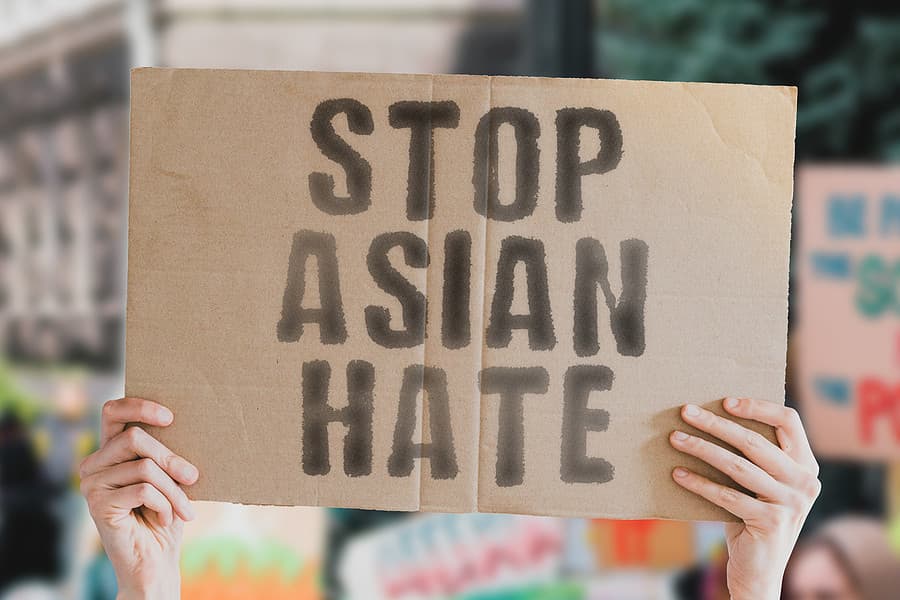In response to the undeniable spike of violence, harassment, and other hate directed at Asian Americans (Chinese Americans in particular), many organizations are issuing condemnations of the violence and support for the AAIP community. This is necessary and easy — but hardly sufficient. Without more efforts, such public statements are hollow woke.
We would be naïve, at best, to assume what exists in public places does not exist in workplaces, too. As with other forms of hate, individuals do not leave anti-Asian bias at home.
Yet many workplaces have been slow to recognize, prevent, and respond to implicit and overt bias against Asian Americans. Simply getting some leaders to acknowledge and truly believe that such racism exists is a critical launching pad but by no means a landing pad.
When I first wrote on the “model minority myth” in 2016, more than a few people asked whether I was making an issue where there really was none. After all, many would state or suggest, Asian Americans are “so successful.”
The reality is that, as a group, broadly defined, Asian Americans largely have been successful. Despite growing economic disparities within Asian communities, Asian Americans have the highest average income and education rates of any racial group.
But this collective success does not mean that we should deny or minimize bias against Asian Americans. Stated otherwise, that other groups may suffer more bias than Asian Americans does not mean we should ignore that experienced by many Asian Americans.
Model Minority Bias
DEI initiatives need to increase their focus on the potential for implicit bias against Asian Americans. In particular, we need to address head on how the “model minority” hurts members of the group. Here are but three examples of conscious or implicit implications of the myth.
- If you are a model minority, and “so smart,” you are not likely to get the help that you very well may need. When we assume individuals are “the model,” they are less likely to get equitable mentoring, support, etc.
- With the model minority myth may come higher expectations. Being good is not good enough. We expect more: Why isn’t this person as successful “as they should be”? This may result in bias due to inflated expectations.
- When individuals talk about Asians as the model minority, there can be a tendency to focus on math and science. This may hurt Asian Americans when they apply for jobs that require strong interpersonal skills. One Asian American shared with me an experience of applying for an HR position and being given an application for an engineering position.
Reforming Training
But it is not only discriminatory actions and decisions that companies must address.There is also the issue of harassment and other unacceptable conduct.
I have seen recent anti-harassment training with nary a word about harassing conduct against Asian Americans. The sounds of silence echo loudly.
We therefore must include in our training programs specific examples of harassing conduct and the obligation of leaders to refrain from and respond to hostile comments/jokes/etc. about Asians.
When issues involving Asian American are addressed, they often do so with a broad brush that denies the diversity in the Asian American community. We need to be careful not to stereotype in the name of cultural sensitivity. For example, just take a moment to Google the differences between Chinese and Vietnamese culture or Japanese or Korean cultures.
Courageous Conversations
Which leads to the topic of courageous conversations. We tend to focus too much on group identity rather than on individual identity. But that often puts Asian Americans in a difficult place.
Asian Americans are not white, so they are subject to obstacles that white people do not face. But because of their “collective success,” these obstacles sometimes are not adequately acknowledged by those who speak of systemic and other obstacles.
To summarize the sentiment of what one Asian woman told me: To my white colleagues, I am not white. To my non-white colleagues, I am white. Where do I go from here?
The burden is on not on her to answer the question. It rests on all of us.
I believe most leaders in general and employees in particular want to be fair and act without bias. Perhaps the alarming bias against Asian Americans will accelerate our awareness of the need to do more to acknowledge and eradicate it.
